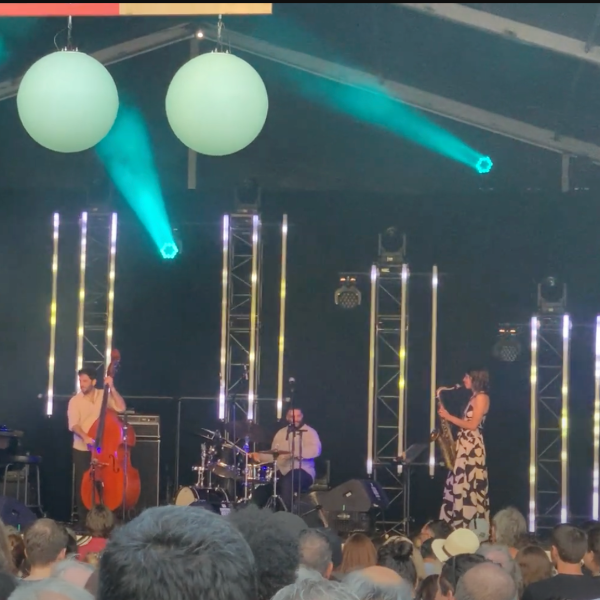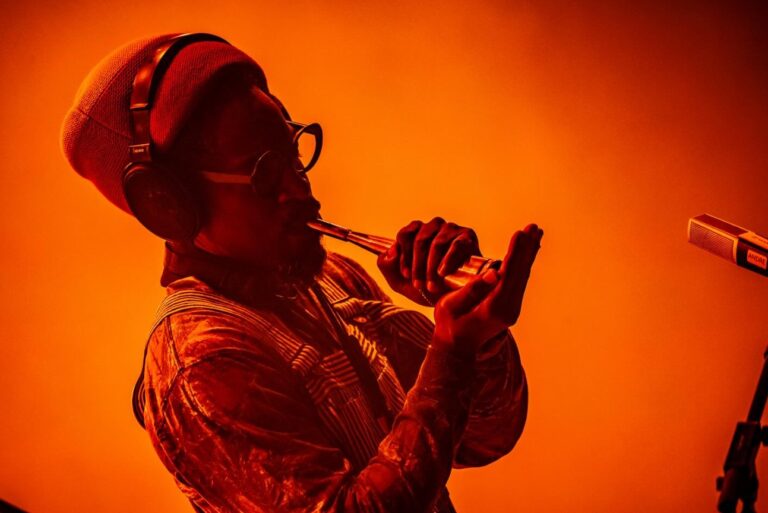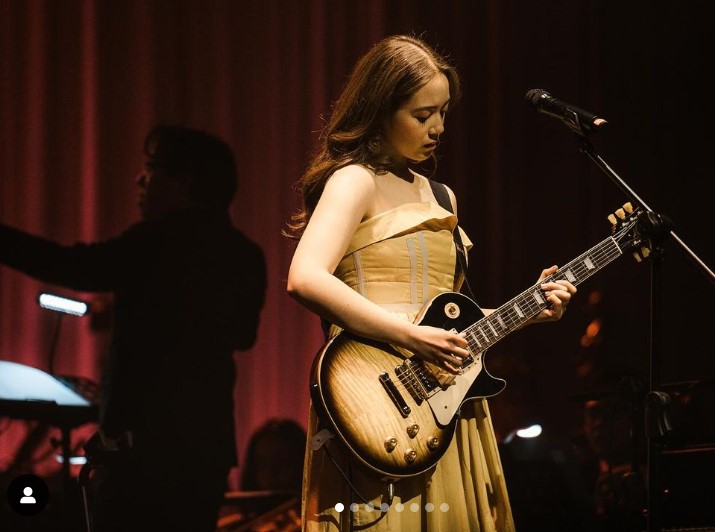No other media outlet in Montreal has so many people on hand to provide expert coverage of the Festival International de Jazz de Montréal. Many of us are scouring the outdoor site and concert halls: Jacob Langlois-Pelletier, Frédéric Cardin, Stephan Boissonneault, Michel Labrecque, Varun Swarup, Vitta Morales and Alain Brunet bring you their album reviews, concert reports and some interviews. Happy reading and listening!
After a ninety minute concert of sentimental selections that enthralled her audience, Icelandic-Chinese artist Laufey can now add the Ella Fitzgerald Award to her artistic achievements. Before performing her final tune at Salle Wilfrid-Pelletier on the evening of June 29th, Montreal Jazz Festival organizers surprised the mononymous singer with flowers and a trophy. This prize is given to a jazz singer of significant talent who has majorly impacted the international scene. Considering the spirit of the award, I frankly have no qualms with her receiving it. Judging by the standing ovation, I would say the audience didn’t either.
This is a major accolade for the young twenty-five year old, not least because the subject of whether her music is or isn’t “authentic” jazz has been debated since first enjoying online virality. Whether they admit it or not, I think her most cynical detractors take issue with the fact that Gen Z is using her music as a reference for jazz without necessarily looking further into the canon. Of course, Laufey herself admits that she sees her music as a fusion of jazz, pop, classical elements. Regardless, I don’t think this debate truly matters. Personally, I long ago lost interest in adjudicating what jazz is and isn’t. Instead, I am much more interested in relaying the listening experience of music that leads to such a debate in the first place.
With that in mind, Laufey is quite obviously a beautiful singer capable of reaching silky notes in the contralto range. In addition, she is a very capable multi-instrumentalist who can play heartbreaking melodies on piano, guitar, and cello. Her accompanying string quartet for this concert added a lot of sentimentality and her rhythm section players balanced this out providing nice moments of groove and dynamics. Furthermore, she has the capacity to write bossa novas that I believe Jobim himself would have approved of as well as the ability to solo competently over chord changes; (though I wished she would have given us more of these moments). What really surprised me, however, were the lights, the glamour, and her movements as a frontwoman.
Indeed, Laufey’s use of campy movements and audience interaction gave me the impression I was watching a musical theater actor or cabaret singer. This had the young audience, many of whom were young girls, extremely giggly. Countless would shout messages of love and encouragement which Laufey would meekly reciprocate. It was all very wholesome but did eventually grow tedious as this phenomenon lasted the entirety of the show. I suppose that’s the price of being such a glamorous musician.
Such tedium would unfortunately be found musically as well before the night was done. Although I do not retract my previous praise, (as every selection was beautifully performed and exceptionally sung), I think ninety minutes of mostly break up songs is a bit much. Laufey at least seems aware of this as she joked about it several times. Regardless, her faithful fans seemed to care little as they loudly sang along to her hits including “From the Start,” and “Falling Behind.”
All things considered, and regardless of any prizes won or not, Laufey is an impressive performer, and writer, who is arguably on track to being a prolific pop star if she isn’t already. With considerable musical talent paired with a willingness to be vulnerable with her fans, I foresee Laufey being a name we’ll continue to hear for as long as she is still interested in creating new music. We will have to see if the subject matter of her music changes significantly with time, but for now they make for a still fresh addition to any playlist in need of some sentimentality.











